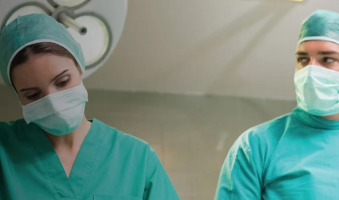Anaesthesia Fundamentals | Physiology | Autonomic Nervous System



Autonomic Nervous System
Session overview
Description
This session summarises the structure and function of the autonomic nervous system.
Learning objectives
By the end of this session you will be able to:
- Describe the structure and function of the autonomic nervous system
- Explain how the sympathetic and parasympathetic systems work in synergy
- Describe the effects the two systems have on key organs in the body
Prerequisites
Before commencing this session you should:
- Have an understanding of conduction in neuronal tissue and the concept of synapse and chemical transmitters
The autonomic nervous system (ANS) has evolved to keep our body functioning without us consciously thinking about it. It allows us to respond to stress. For example, when our ancestors were chased by a sabre-tooth tiger their sympathetic nervous system helped them get away; and when they did their cave paintings, the parasympathetic nervous system allowed them to use their brain without having to think about their insides.
In this session you will revise your knowledge of the structure and function of the ANS. We will then consider how the system maintains function, and the concept of tone in the system. Finally, you will be able to predict how, in key organs, you can manipulate either system to produce a given effect.
- Anaesthesia Fundamentals | Physiology | Ventilatio...
- Posted By eIntegrity Healthcare e-Learning
- Posted Date: 2024-12-26
- Location:Online
- This session describes how and why ventilation and perfusion vary in the healthy lung. Causes of hypoxia, such as hypoventilation, increased dead space and shunt, are discussed to help the trainee explain and manage hypoxia clinically.
- Anaesthesia Fundamentals | Physiology | Pulmonary ...
- Posted By eIntegrity Healthcare e-Learning
- Posted Date: 2024-12-26
- Location:Online
- This session covers the measurement and clinical importance of lung volumes, including functional residual capacity and dead space. Information regarding the performance and interpretation of flow-volume loops is also included.
- Anaesthesia Fundamentals | Physiology | Co2 Carria...
- Posted By eIntegrity Healthcare e-Learning
- Posted Date: 2024-12-26
- Location:Online
- This session covers the physiology of how carbon dioxide is carried by blood, including its conversion into bicarbonate ions and the role of the red blood cell and haemoglobin in this process. The session also describes how buffers work, and the fundament
- Anaesthesia Fundamentals | Physiology | Function o...
- Posted By eIntegrity Healthcare e-Learning
- Posted Date: 2024-12-26
- Location:Online
- This session focusses on the function of haemoglobin in oxygen (O2) carriage from the lungs to other tissues where cells are supplied with the O2 required for oxidative phosphorylation in the mitochondria. We will cover the structure
- Anaesthesia Fundamentals | Physiology | Gaseous Ex...
- Posted By eIntegrity Healthcare e-Learning
- Posted Date: 2024-12-26
- Location:Online
- This session will introduce you to the physiological effects of altitude and the adaptations that occur with acclimatization. It also introduces the pathology and physiology of high pressure and decompression.


